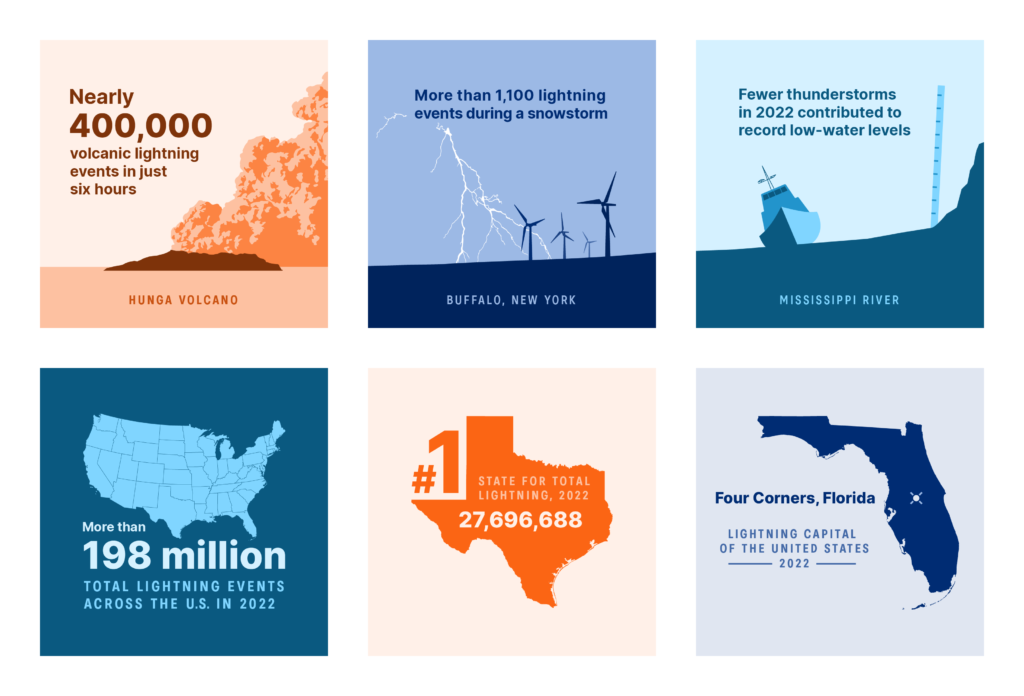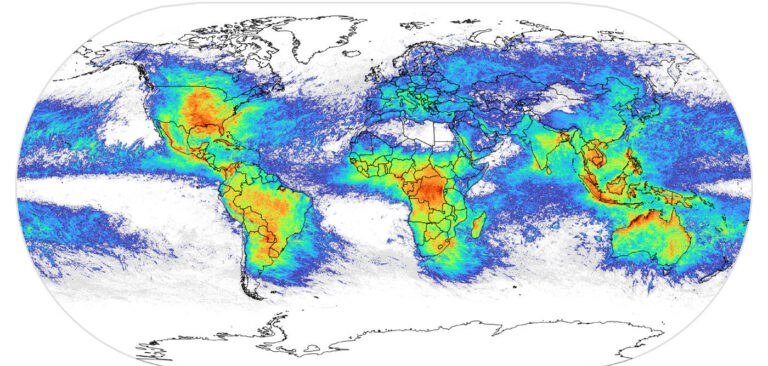Weather and environmental measurement specialist Vaisala has published its 2022 Annual Lightning Report, which includes details on the most extreme concentration of lightning ever detected with nearly 400,000 events in just six hours during a volcanic eruption.
Now in its sixth edition, the report highlights the most remarkable lightning events and trends of the previous year. The Vaisala Xweather report reveals a total of 198,227,289 in-cloud and cloud-to-ground lightning events in the continental United States, the highest total count since 2019.
In contrast, the state of Texas saw a significant decrease in lightning activity, and an unusual lack of thunderstorms led to drought across the Mississippi River basin.
Chris Vagasky, a meteorologist and lightning expert at Vaisala Xweather, said, “Even as lightning counts across the continental US returned closer to average levels, 22 states still saw below-average lightning – including Texas, which saw its count drop by 34% from 2021. Much of the Mississippi River basin saw below-average lightning as the drought worsened, and the lowest water levels in decades on parts of the Mississippi River had significant impacts on agriculture and river transportation.”
The 2022 Annual Lightning Report highlights:
- Lack of thunderstorms dried up North America’s largest river: The Mississippi River basin receives up to 60% of its yearly rainfall from thunderstorms. Exceptional drought, exacerbated by an 11% decrease in lightning over the basin, resulted in the river’s lowest water levels in decades. Some new low-water marks surpassed records from the 1960s, with water levels in Memphis, Tennessee, dropping so low in mid-October that barges became stranded.
- Record-breaking volcanic lightning: The eruption of the Hunga volcano in the Pacific Ocean between December 19, 2021, and January 16, 2022, triggered over 600,000 lightning events. Most of these occurred on January 15, when Vaisala’s Global Lightning Dataset GLD360 detected nearly 400,000 lightning events in just six hours. At the peak of the eruption, half of all global lightning was concentrated around the volcano – the greatest concentration of lightning ever detected. The eruption was the largest in over 100 years, throwing enough water into the atmosphere to temporarily affect average temperatures around the world. The eruption produced global tsunamis that caused damage to the Kingdom of Tonga and other Pacific states.
- Four Corners, Florida is the 2022 Lightning Capital of the US: Just two miles (3.2km) west of Disney’s Animal Kingdom Lodge, Four Corners saw 1,229 lightning events per square mile in 2022, the highest density of lightning of any community in the country. Four Corners takes the number-one spot from the 2021 Lightning Capital, Flatonia, Texas. The state of Florida also secured the top spot in the US for total lightning density, with 285 lightning events per square mile, an increase of 27% compared with 2021.
- Wind turbines triggered lightning during a record-breaking lake-effect snowstorm near Buffalo, New York: A snowstorm over the Eastern Great Lakes in November brought up to 80 inches (2,032mm) of snow and unusual amounts of lightning. A wind farm south of Buffalo, New York, saw more lightning in 28 hours than in the first 10 months of 2022, and wind turbines downwind from the Great Lakes saw more than 1,100 lightning events in just three and a half days. Wind turbines can trigger lightning when winter storms move overhead. Lightning strikes can cause serious damage to wind turbines.
- Texas remains the US lightning count leader: The Lone Star State continued its run as the number-one state for lightning with 27,696,688 total lightning events in 2022. While it secured the top spot, its total count dropped significantly from the 41,000,000 events recorded in 2021. Texas has faced its most severe drought since 2011, with more than a quarter of the state experiencing exceptional drought conditions in mid-August.
The 2022 Annual Lightning Report leverages intelligence from Vaisala’s US National Lightning Detection Network (NLDN) and Global Lightning Dataset GLD360. Supported by more than three decades of data history, the 2022 report is based on the most comprehensive source of global and local lightning data in the world.
“Thunderstorms are life-threatening,” added Vagasky. “Lightning can start wildfires, cause power outages and damage infrastructure. Monitoring lightning in real time and analyzing long-term trends is essential for protecting life and property and understanding changes to our climate.”
To view the Vaisala Xweather 2022 Annual Lightning Report, click here.




